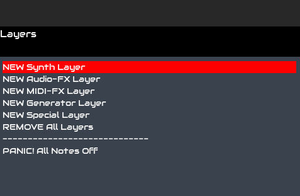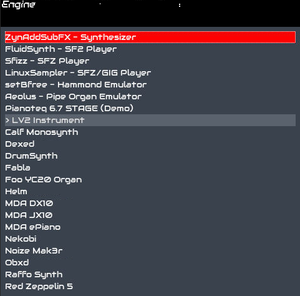Zynthian Engine Preset Structure
The relationship between a zynthian it's engines and how settings are stored has grown over the years and like much of the project ever growing.
Suffice to say You need an engine to make things happen. Which is where most of us would start . .
The zynth starts up with nothing loaded, althou' it should quickly build up your last state as you start to do things. . .
But it's really all engines as this stage and you want to load one up to use it.
The Synth Layer is the first to consider this will allow selection of a range of synthesizer like devices that get automatically connected to a MIDI channel (more on this later, hopefully) and the default audio available outputs, which will outside of a few crazed individual connections will be the left and right output of the zynthian, available as two audio sockets for further abuse in other kit.
There are several available.
Now some of these are sound sampler base (Fluidsynth,Gigasampler,SFizz . . . ), others are genuine synthesizers (ZynaddSubFx,Dexed, Helm,) still others are specific models of existing instruments (Pianoteq, Aeleous,) and others are strange weird, wonderful and possibly untested, collected from the more fetid areas of the Internet, So be aware.
The Zynthian simply serves up engines from elsewhere. It isn't responsible for those engines, offering only a standardized approach to handling them.
But mindful of this warning, things start to look very good, because an awful lot of people have got together over this and within the Linux based world in which the Zynthian lives, constructed some standards to define these sorts of things.
Enter LV2.

